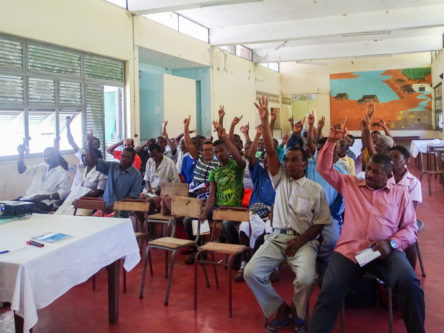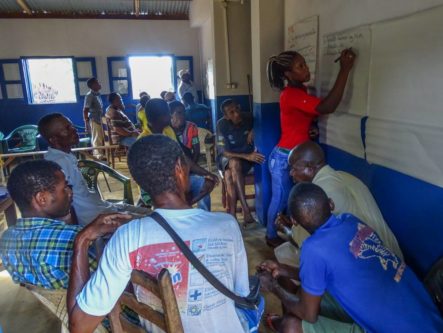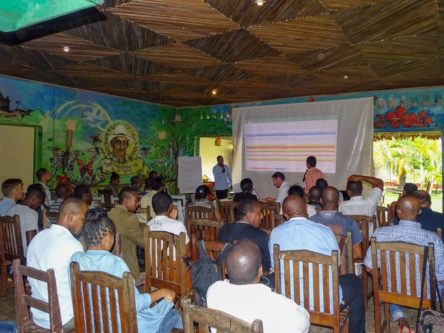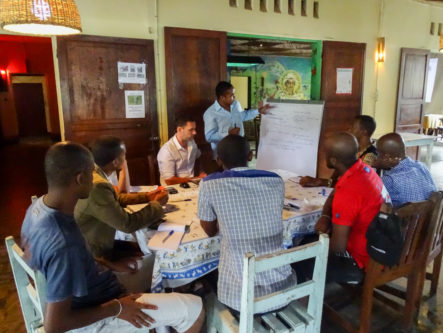I remember when I was younger [in the early 1980s] our catch was plentiful, but today we only catch half of what we used to.” – Bernardin
Bernardin is a fisherman from Tsimipaika Bay in northwest Madagascar, an area that includes rich and diverse ecosystems ranging from seagrass beds and coral reefs to mangrove forests. These ecosystems support protected species of shark, whale, ray and turtle, and a variety of fisheries including crab, sea cucumber and a nationally famous mackerel fishery. However, like many small-scale fishers in Madagascar, Bernardin is experiencing a significant decrease in his catch.
For over a decade, Tsimipaika Bay has seen high levels of immigration from less productive areas of Madagascar. This population growth has led to increased fishing efforts, including increased use of unsustainable fishing practices, and a mangrove deforestation rate of 3.74% per year – mostly for charcoal production.
Bernardin and his community know that these ecosystems need protecting in order to protect their livelihoods, but even if they diminish their fishing efforts, fully respect the dina (community-based laws) and even put in place reserves, others could continue to exploit these resources excessively. They can see that local management efforts will only succeed with full participation from the whole community.
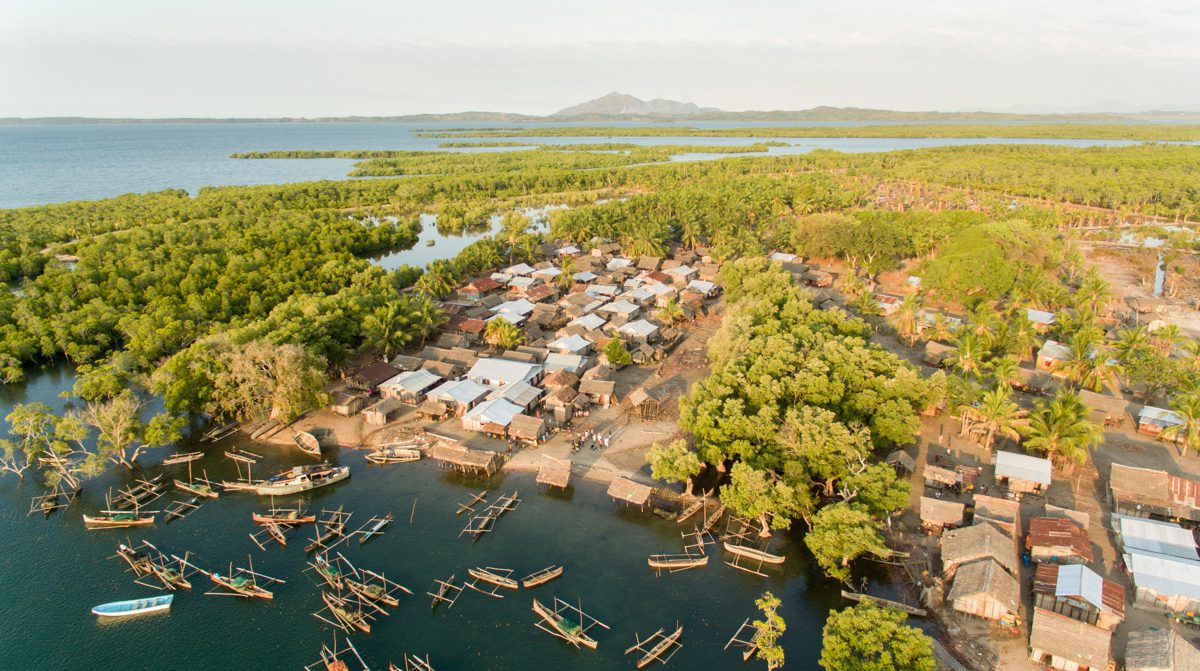
Ambiky village in Tsimipaika Bay | Photo: Adrian Levrel
Since 2013, Blue Ventures has been supporting communities in Tsimipaika Bay to find ways to manage their local fisheries. To ensure all communities have a say in the decision-making process, we have been working alongside representatives from all 36 villages in the area to produce a Fisheries Management Plan (FMP).
The aim of this FMP is to increase fisheries resources in the bay, using community-led management measures such as temporary fishery closures, permanent no-take reserves, reducing unsustainable fishing methods and restoring damaged ecosystems. However, before these management measures could be decided, fisheries data was needed!
My colleagues and I helped Bernardin and other fishers from Tsimipaika Bay to carry out participatory mapping of the bay to discover how fishers were currently using their local resources. Meanwhile the communities in the bay shared other data collection activities amongst themselves, including collecting catch data and information on the causes of ecosystem degradation and on the perceptions of fishers.
Madame Sylvana – a fisherwoman from the village of Ambolobozo – was one of the catch data collectors, and she saw it as a way of taking responsibility for safeguarding local marine resources for future generations.
The people here can change things, we cannot wait for others to change everything.” – Madame Sylvana
As the data set grew, and the early analysis of catch data began to reveal a more complete ecological picture, our team created a first draft of the FMP, incorporating all the management measures that the Tsimipaika Bay communities had suggested. We then organised meetings and consultations to enable the communities and stakeholders in Tsimipaika Bay to refine and complete the FMP.
Not all the communities agreed with the management measures suggested by others, but they resolved these challenges by modifying some of them and prioritising based on impact and feasibility. Meanwhile, the stakeholders – which included partner NGOs, local and regional authorities, and the government research centre CRNO – provided technical feedback on each management measure based on the results of the community-led data collection.
This remarkable achievement was only possible because of the willingness of stakeholders and communities to have open and honest discussion, and to make certain compromises.
Finally, after three years of data collection, consultations, analysis and planning, a FMP that every community and stakeholder was happy with was formally adopted in June 2018. This remarkable achievement was only possible because of the willingness of stakeholders and communities to have open and honest discussion, and to make certain compromises.
Many of the management measures – such as temporary fisheries closures, gear regulations and permanent reserves – require fishers to restrict themselves from attaining maximum short-term yields, but Bernardin, Madame Sylvana, and all the other small-scale fishers of Tsimipaika Bay are willing to make these compromises because they believe that it will benefit their livelihoods in the long term. Other management measures include minimum catch sizes, restrictions on night fishing, and mangrove reforestation activities.
The FMP also outlines strategies for each community to help them meet their new commitments, and the Blue Ventures team will continue their regular outreach and technical support visits to help with FMP implementation. This will include setting up or reinforcing fisheries monitoring, increasing surveillance during closures and establishing dina that covers the entire bay.
In 2016 a community mangrove patrol was ambushed and Bernardin’s friend – the ranger Attoumany Alily – lost his life. Alily posthumously received an award for his courage, and continues to inspire communities to sustainably manage their mangroves against adversity.
We will continue to advocate and raise awareness [of the FMP] for the sake of our children, even if it costs us our lives.” – Bernardin
To safeguard future community-led surveillance patrols, the FMP includes mandatory safety protocols and government support teams for specific missions.
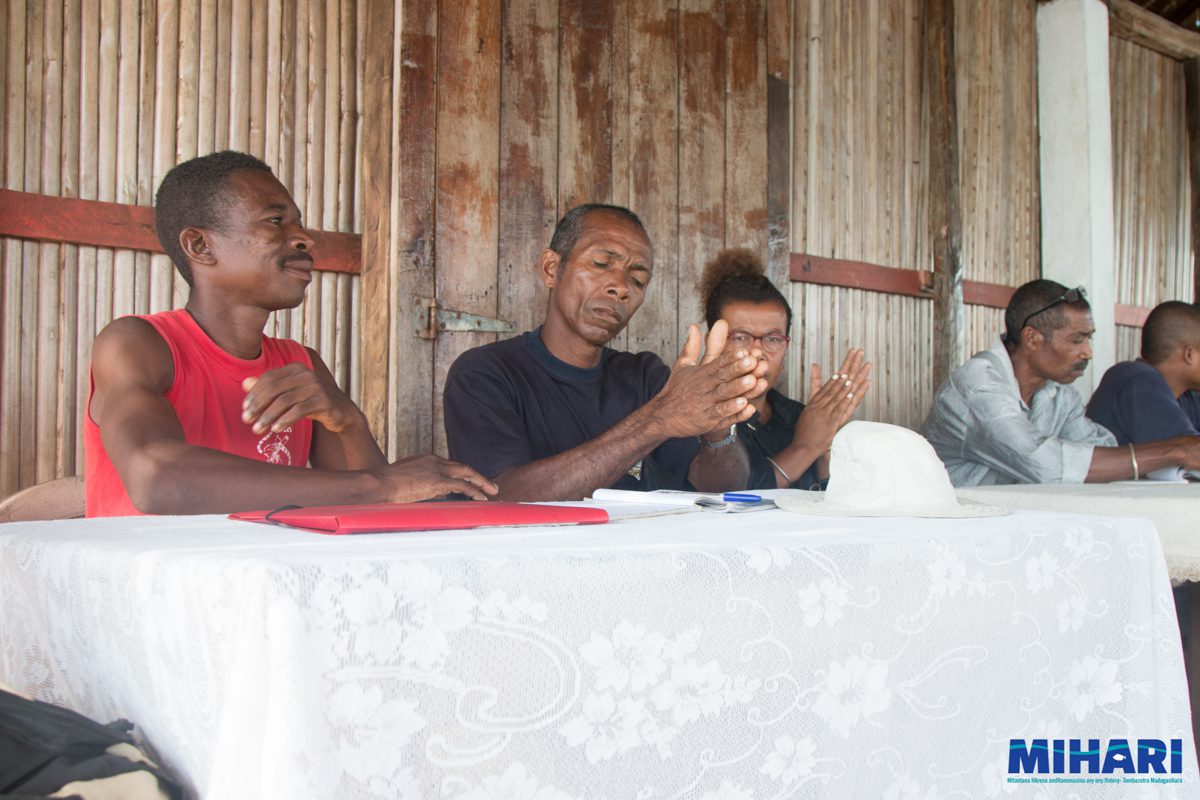
Bernardin (second from left) sharing his surveillance experience during a community exchange | Photo: MIHARI
I’ve been proud to be part of the FMP support team since November 2016, and I believe that the integrated, collaborative approach of the FMP will lead to goodwill and cooperation throughout the management area.
In my years of working on this project I have seen how much hope it has given the fishers in the bay. Because of the open way in which it was developed, every community is convinced and unified in support of the FMP, which is a huge improvement on three years ago.
Find out more about our work rebuilding fisheries with coastal communities








